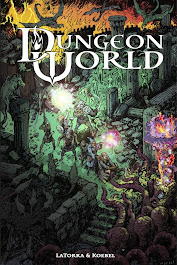I know I said that I wouldn’t play around with my role playing card game (RPCG) until I finished up my revision of In Between, but I just couldn’t help myself.
Here is a mock-up of what one of the Persona Cards might look like.
Apart from the terrible art and questionable graphic design skills what’s going on here exactly? Well, let’s start from the top and work our way down.
First off you’ll notice that the card is red. Various colors represent different attributes. In this case that attribute is STRENGTH. Don’t worry, I’ve considered colourblind players. You see that tiny little icon at the top? It’s supposed to look like a muscely bicep. It’s there as a secondary way of telling what attribute the card is linked to. I’ll talk more about attributes at some later point in time. For now, just know that they exist.
Next up is the title of the card. That would be Orc Hatred. That’s pretty straightforward, as is the the stick-art below.
Now we reach the good stuff. In the text box you’ll see the bolded word ANCESTRY on the right. That’s to tell us that it is an Ancestry TYPE card. That’s important for random character creation and also for any other cards that might affect Ancestry cards. There are other Types as well. Right now they are limited to 3 types for Persona cards. That is Ancestry, Ability, and Equipment. As an aside, Persona cards are those that make up a player’s character . Character cards just sounded kind of boring so I decided to use Persona instead.
Beneath the TYPE is the RULES TEXT. This is the meat of a card. It has some role playing information which I think is really important to help drive home that this is a RPG and not a competitive card game. Following that is the actual mechanics aspect. In this case it talks about TRUMPS. Trumps are going to be a major part of the resolution system. Everything has a trump, think of it like rock-paper-scissors. Rock trumps paper which trumps scissors which trumps rock. Only in this case everything has a positive and negative trump which for the sake of simplicity we will equate to Critical Success and Critical Failure. Essentially what this card is saying is that if you’re fighting an orc and you roll a 1 you treat it like a 10 OR if you are negotiating with an orc and you roll a 20 then you treat it like a 10. Trumping and resolution is a bit more complicated than that, but this post isn’t about that. I’ll talk about the resolution system some other time.
That’s everything that is on this card. There is room for more information and some of the non-persona cards do have other stuff on them. Monster/NPC/Challenge cards, for example, require attribute information as they aren’t built out of 9 separate cards. This will be represented by colored symbols.
That’s enough about this game for now. If you’ve got a (relevant) opinion I’d love to hear it.
Here is a mock-up of what one of the Persona Cards might look like.
 |
| I think I’ve missed my true calling in life: art. |
First off you’ll notice that the card is red. Various colors represent different attributes. In this case that attribute is STRENGTH. Don’t worry, I’ve considered colourblind players. You see that tiny little icon at the top? It’s supposed to look like a muscely bicep. It’s there as a secondary way of telling what attribute the card is linked to. I’ll talk more about attributes at some later point in time. For now, just know that they exist.
Next up is the title of the card. That would be Orc Hatred. That’s pretty straightforward, as is the the stick-art below.
Now we reach the good stuff. In the text box you’ll see the bolded word ANCESTRY on the right. That’s to tell us that it is an Ancestry TYPE card. That’s important for random character creation and also for any other cards that might affect Ancestry cards. There are other Types as well. Right now they are limited to 3 types for Persona cards. That is Ancestry, Ability, and Equipment. As an aside, Persona cards are those that make up a player’s character . Character cards just sounded kind of boring so I decided to use Persona instead.
Beneath the TYPE is the RULES TEXT. This is the meat of a card. It has some role playing information which I think is really important to help drive home that this is a RPG and not a competitive card game. Following that is the actual mechanics aspect. In this case it talks about TRUMPS. Trumps are going to be a major part of the resolution system. Everything has a trump, think of it like rock-paper-scissors. Rock trumps paper which trumps scissors which trumps rock. Only in this case everything has a positive and negative trump which for the sake of simplicity we will equate to Critical Success and Critical Failure. Essentially what this card is saying is that if you’re fighting an orc and you roll a 1 you treat it like a 10 OR if you are negotiating with an orc and you roll a 20 then you treat it like a 10. Trumping and resolution is a bit more complicated than that, but this post isn’t about that. I’ll talk about the resolution system some other time.
That’s everything that is on this card. There is room for more information and some of the non-persona cards do have other stuff on them. Monster/NPC/Challenge cards, for example, require attribute information as they aren’t built out of 9 separate cards. This will be represented by colored symbols.
That’s enough about this game for now. If you’ve got a (relevant) opinion I’d love to hear it.



